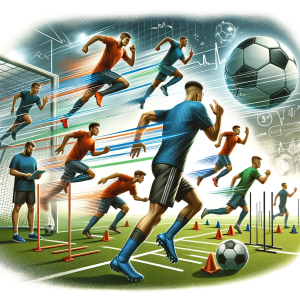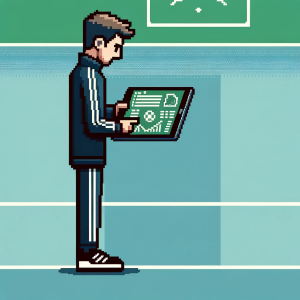
Cracking the Code of Teamwork in Soccer
What separates a team that keeps the ball flowing from one that constantly loses possession? The answer might not just be talent—it could be network science. A new systematic review demonstrates how Social Network Analysis (SNA)—a tool borrowed from sociology and mathematics—can reveal the hidden connections that shape success in soccer.
If you’ve ever watched Barcelona’s tiki-taka, Guardiola’s Manchester City, or Spain’s 2010 World Cup run and thought, “They’re just connected,” that’s exactly what SNA measures. By mapping every pass like a web, SNA helps coaches, analysts, and even youth clubs see who holds the team together, where breakdowns occur, and how tactical systems shape play.
What Is Social Network Analysis in Soccer?
Think of each player as a node and each pass as a link. The stronger and more frequent the links, the more connected your team looks. Instead of just counting passes or shots, SNA dives deeper:
- Density: How connected the whole team is. Higher density usually means smoother ball circulation.
- Clustering coefficient: How well small groups of players (triangles, especially in midfield) link up.
- Centrality: Which players are true “hubs”—often central defenders and midfielders who touch the ball most.
Researchers reviewed 55 studies and found that cohesive networks—teams that pass fluidly, keep tight local connections, and adapt their patterns—tend to win more often.
Why This Matters for Coaches and Clubs
The review highlights a key point: success isn’t just about stars, but about structure. Even Lionel Messi shows up as highly connected not because of solo dribbles, but because of how often teammates involve him in the network.
It also shows how tactical formations change the “map.” For example:
- A 1-4-2-3-1 system creates stronger overall cohesion than a 4-4-2.
- Forwards link more passes in a 1-4-2-2-2, while defensive midfielders dominate in a 1-4-2-3-1fpsyg-16-1659603.
In short: SNA doesn’t just measure what happened. It explains why certain systems work better for different rosters.
Actionable Takeaways for Coaches and Clubs
- Track Network Density in Training
- Use small-sided games and record passing data. Teams with higher density (more connections between players) are likelier to succeed in matches.
- Spot Hidden Hubs
- Don’t assume your star striker is always the most influential. Central midfielders or defenders may hold the network together. Reward and develop these roles.
- Adapt Formations with Network Insights
- If your midfielders show high “betweenness centrality” (they connect lines of play), a 1-4-2-3-1 might maximize their impact. If strikers dominate the network, consider systems that funnel play forward.
- Use Pitch-Zone Networks for Youth Development
- Divide the field into zones and chart how well players connect across them. This helps young players learn not just to pass, but where and when to pass.
- Prepare for Opponents with Context in Mind
- The review notes that network patterns shift based on game state. Losing teams often play possession-heavy, while winning teams go more direct. Train your players to read and respond to these shifts.
Bigger Picture: The Future of Soccer Analytics
This isn’t just a tool for elite clubs with massive data budgets. With affordable GPS trackers, simple coding tools, or even match video, grassroots clubs can start mapping their own passing networks.
The review also points out gaps that matter for the future:
- Women’s and youth football are under-studied.
- Defensive networks—how players shut down space—need more focus.
- Season-long analyses are rare but crucial for development planning.
By embracing these ideas, clubs can join the next wave of data-informed coaching—not to replace intuition, but to sharpen it.
Your Turn to Kick It Off
SNA shows that soccer is more than goals and assists—it’s about connection. Every pass is a thread, and the team that weaves the strongest web often emerges victorious.
Now it’s your move:
- How might you track your team’s passing patterns during training?
- Which players do you suspect are “hidden hubs” in your squad?
- Could network insights help your club choose formations more effectively?
Drop your thoughts in the comments or share this with your coaching staff—we’d love to hear how you’d put network science to work on the pitch.



